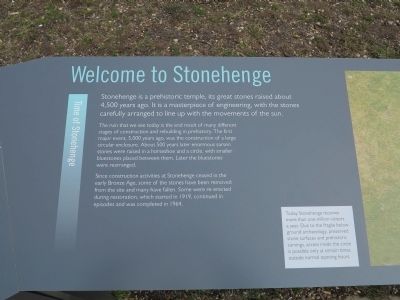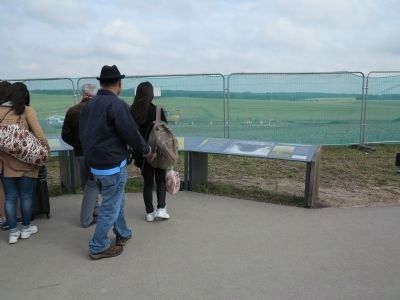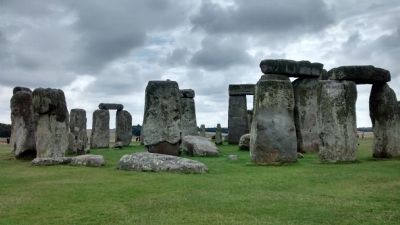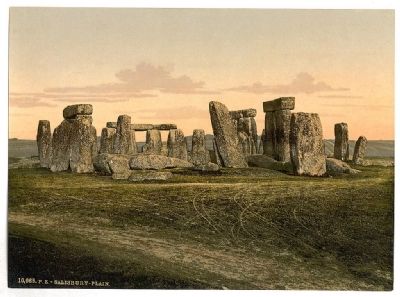Near Amesbury in Wiltshire, England, United Kingdom — Northwestern Europe (the British Isles)
Welcome to Stonehenge
Time of Stonehenge
The ruin that we see today is the end result of many different stages of construction and rebuilding in prehistory. The first major event, 5,000 years ago, was the construction of a large circular enclosure. About 500 years later enormous sarsen stones were raised in a horseshoe and a circle, with smaller bluestones placed between them. Later the bluestones were rearranged.
Since construction activities at Stonehenge ceased in the early Bronze Age, some of the stones have been removed from the site and many have fallen. Some were re-erected during restoration, which started in 1919, continued in episodes and was completed in 1964.
Today Stonehenge receives more than one million visitors a year. Due to the fragile below-ground archaeology, preserved stone surfaces and prehistoric carvings, access inside the circle is possible only at certain times outside normal opening hours.
Topics. This historical marker is listed in these topic lists: Anthropology & Archaeology • Churches & Religion • Man-Made Features. A significant historical year for this entry is 1919.
Location. 51° 10.771′ N, 1° 49.577′ W. Marker is near Amesbury, England, in Wiltshire. The marker is located near Stonehenge proper, but access is via the new visitor centre, a mile north of the A303 on the A360. Touch for map. Marker is in this post office area: Amesbury, England SP3 4DX, United Kingdom. Touch for directions.
Other nearby markers. At least 2 other markers are within 13 kilometers of this marker, measured as the crow flies. Major Alexander William Hewetson (approx. one kilometer away); The Crispin Inn (approx. 12.3 kilometers away).
Also see . . .
1. New Visitor Centre. Write-up on new visitor centre which opened in 2013. (Submitted on September 3, 2014, by Richard Denney of Austin, Texas.)
2. Stonehenge - English Heritage. English Heritage's page for Stonehenge: Stonehenge is perhaps the most famous prehistoric monument in the world. Begun as a simple earthwork enclosure, it was built in several stages, with the unique lintelled stone circle being erected in the late Neolithic period around 2500 BC. Stonehenge remained important into the early Bronze Age, when many burial mounds were built nearby. Today Stonehenge, together with Avebury and other associated sites, forms the heart of a World Heritage Site with a unique and dense concentration of outstanding prehistoric monuments. (Submitted on September 20, 2014.)
3. Romancing the Stones. Laura Miller's New Yorker article (April 21,
2014) on Stonehenge, putting it the larger geographical context of British pre-historic monuments, and includes the latest findings on Stonehenge from the Stonehenge Riverside Project. (Submitted on September 20, 2014.)
Credits. This page was last revised on January 27, 2022. It was originally submitted on September 3, 2014, by Richard Denney of Austin, Texas. This page has been viewed 549 times since then and 16 times this year. Photos: 1, 2, 3. submitted on September 3, 2014, by Richard Denney of Austin, Texas. 4. submitted on September 20, 2014. • Andrew Ruppenstein was the editor who published this page.



